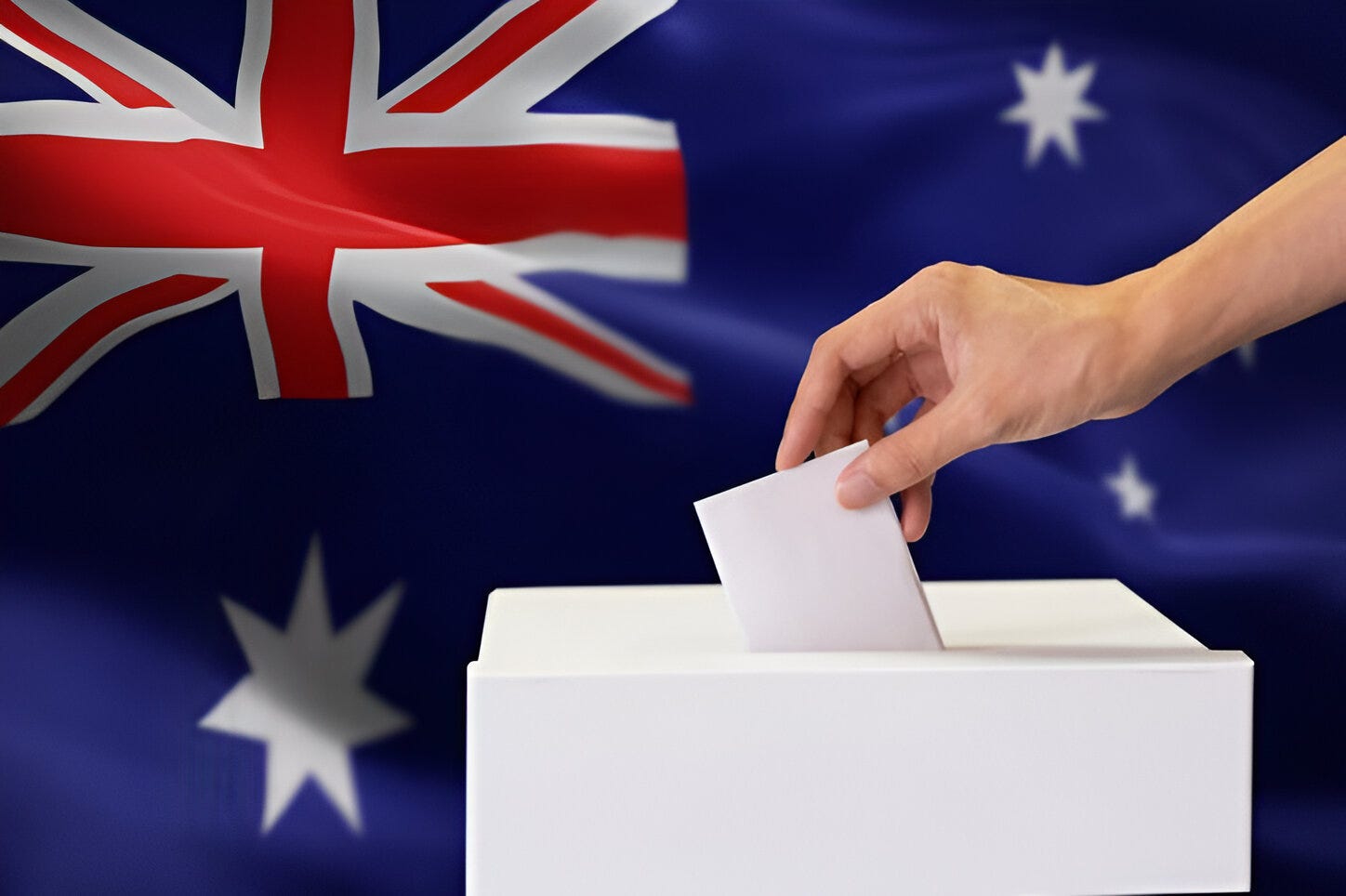Jessica Colby
Liberty Itch
Mandatory voting is a policy that legally compels people to vote, often with the threat of a fine and other consequences if they fail to do so. It is found in 21 countries including Australia, which applies the policy at both the federal and state levels and even at the council level in some states. In this article, I will explain the various problems with the policy including why I believe it is, ironically, inherently undemocratic.

The major argument used to justify compulsory voting is that it ‘increases democratic participation’. The presumption is that if people are forced to vote, they become politically involved. This is far from reality though. You may be able to force someone to vote but you can’t force someone to care and, as a result, people who do not care are influencing the outcomes of elections.
Most if not all these non-caring votes tend to be for major parties such the Liberal Party, the Labour Party and, for younger voters, the Australian Greens. As a result, mandatory voting significantly disadvantages minor parties which are typically supported by those who are more politically invested.
The illegitimacy of the election and elected candidates and acted as a form of protest in a nation with diminishing political rights and political choice.
Mandatory voting is not truly about democratic participation, but rather the appearance of participation. The original reason that mandatory voting was introduced at the federal level was because of what was considered low voter turnout at the 1922 Australian election, which the government perceived as embarrassing.
Similar incidents resulted in mandatory voting being introduced at the state and council levels. Forcing people to vote was easier than trying to appeal to people and get them to care about political candidates.
I would even call mandatory voting politically coercive. It deprives people of freedom of choice and compels them into participating in an unwanted political act. As mentioned, mandatory voting affects the outcome of an election by benefiting major parties and the political establishment. Forcing someone to vote puts pressure on them to pick a political candidate, a form of voter coercion.
Given this, I would argue that the choice not to vote itself is a political act. Not voting represents the choice to both reject unfit candidates and reject the political establishment. Voter turnout is often used by election observers and the public to judge the legitimacy of sitting governments and help the public measure the collective fitness of political candidates after an election.
It can also act as a form of protest against bad or unfit candidates and the rejection of unfair and unfree elections. An example of this was the recent elections in Russia, which were not considered free and fair by international observers or many people within Russia.
Forcing people to vote was easier than trying to appeal to people and get them to care about political candidates.
Given the dubious selection of political candidates and concerns surrounding the legitimacy of election results, many Russian voters choose to abstain from voting. The resulting low voter turnout reflected the illegitimacy of the election and elected candidates and acted as a form of protest in a nation with diminishing political rights and political choice.
A more extreme example is the 2024 Iranian election, which had the lowest voter turnout since 1979, with just 40 per cent of eligible voters choosing to vote. The widespread boycott of the election gave the people of Iran an opportunity to reject all the political candidates and demonstrate their lack of legitimacy, based on the fact that many Iranians view the elections as a sham designed to prop up the repressive regime.
Given this, it is important to defend the right not to vote as the right not to vote is just as important as the right to vote itself. Voting should be a right afforded to all adult citizens, but it should never be an obligation.
This article was originally published by Liberty Itch.









